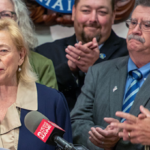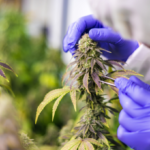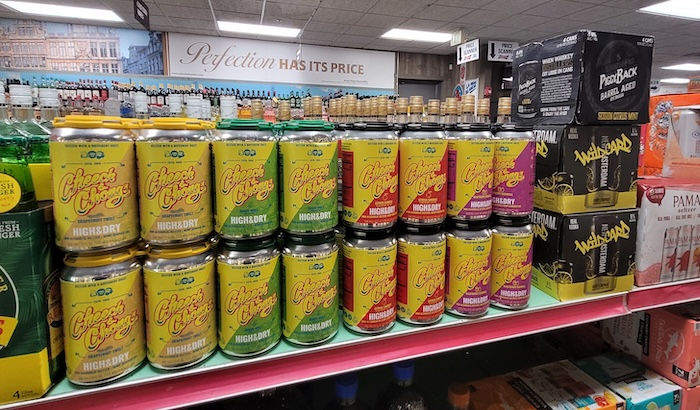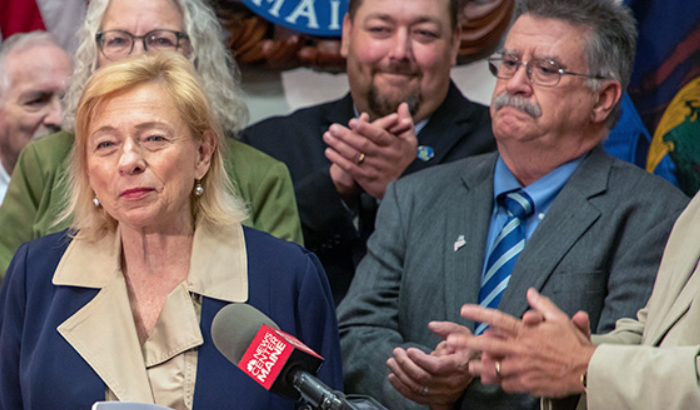
Following embarrassing complaints from scientists and stakeholders about weak standards for measuring potency, Massachusetts Cannabis Control Commission publishes new guidance document
On Monday, the Massachusetts Cannabis Control Commission issued a bulletin “providing guidance to Commission-licensed Independent Testing Laboratories … to provide clarification, ensure consistency, and establish standards following the latest considerations from the United States Pharmacopeial Convention.”
The action did not come randomly. Rather, industry voices have been clamoring for major changes for several years.
At the Cannabis Science Conference in Rhode Island in September, Dr. Christopher Hudalla, the president of ProVerde Labs in Milford, railed against the CCC on multiple fronts, drilling the agency for its “lack of regulatory guidance.”
One of the results of the CCC’s lack of standards, Hudalla explained, is that the cannabinoid potency listed on products means almost nothing. Between allowing for what he calls “potency plumping,” and failing to require more accountability and universal water-weight correction, the state and by extension producers and testing labs are letting down consumers, and even screwing them in many cases. Hudalla compared it to the food industry …
“Since the 1970s, [food producers] have been injecting our meat with water and liquid up to 15%; that can increase the sodium content. It is estimated that consumers pay $2 billion a year in added water weight. Under USDA rules, [those products are] still able to be labeled as natural. And prior to 2014, producers could do this and not have any requirement to put it on the label.”
Christopher Hudalla of ProVerde Labs On "The Art of Potency Plumping" from TJM on Vimeo.
Using research done by Jeff Rawson at the Institute of Cannabis Science and others, Hudalla extrapolated that “same rationale and [applied] it to cannabis,” saying, “In 2022, Massachusetts consumers paid over $985 million for cannabis flower and prerolls. Some independent studies have suggested that the [THC] inflation is somewhere between 10 to 30%. So if we take a modest approximation of 10%, Massachusetts consumers could have paid $90 million for THC they did not really receive last year alone.”
Rawson and Hudalla, who also took a huge swipe at the CCC on the Young Jurks podcast earlier this year, have not been alone in their outspokenness on these issues. Yasha Kahn of MCR Labs analyzed potency testing results from the cannabis markets in four states including Massachusetts, and just this week exposed widespread industry fraud nationally via MJBizDaily at a time when all eyes are on the site during its annual Las Vegas convention. “Marijuana sold with unreliable THC potency ‘is an issue in every medical and recreational state,’” Kahn told them.
It’s also believed by many that testing and related topics may be at the center of various controversies swirling around the CCC’s human resources shakeup and suspension of Chair Shannon O’Brien by the appointing Mass Treasurer Deb Goldberg. Independent blogger Grant Smith Ellis has done extensive work on this angle, including being the first to report on the new bulletin. And back in October, Rawson penned a letter to Goldberg saying he “recently discussed with Chair O’Brien problems with scientific regulation of cannabis testing in the state, including how some of the staff at CCC are compromised by conflicts of interest and how misinformation is rife in the adult-use cannabis market.”
Rawson continued, “O’Brien expressed concern about the efficacy of testing regulations, and about building a state lab that would require years of work, the hiring of highly qualified staff, and millions of dollars to bring online. … Chair O’Brien was one of the most receptive and understanding of the public officials we’ve encountered as we seek to reform cannabis testing, which is why her unexplained suspension concerns us.”
In an attempt to turn the tide and address some of the issues at hand, the new instructional bulletin, issued by acting CCC Executive Director Debra Hilton-Creek on Monday, “focuses on ITL [Independent Testing Lab] reporting for total cannabinoids for product categories intended to be consumed through combustion (i.e., flower/bud/trim/shake, raw/infused pre-rolls, concentrates, and extracts).” The directive gives labs a formula for calculating delta-9 THC, THCA, and CBD, and sets a protocol for moisture correction.
“The updates to reporting of cannabinoids are a big win for consumers in Massachusetts,” Rawson told Talking Joints Memo. “It’s significant that these overdue changes to policy coincide with several departures from the CCC. Governance may be returning.”
In a statement, the Westfield-based SafeTiva Labs wrote, “Using consistent calculations is a great step toward testing standardization. The calculations they provided are widely recognized as the standard, but having the CCC explicitly say it is important. … Ultimately, potency numbers are going to go down across the state, but not uniformly as it depends on what method your lab is using to measure. … The answer is (and has always been) to stop shopping based on potency.”
Jonathan Ferguson, the CEO and Co-Founder of Green Valley Analytics in Holyoke, said, “We at Green Valley Analytics are 100% in favor of the recent changes from the CCC related to how potency is measured and reported from lab to lab. This is one (very important) step in the right direction for leveling the playing field between labs that have historically used different methodologies. Most importantly, this is going to help give the consumers a greater degree of confidence in the THC values they are reading on the product labels.”
Per the CCC bulletin, “Additional guidance relative to testing requirements for cannabis and cannabis products will be forthcoming as the Commission continues its review of regulations.”
“They say more changes are coming and I hope [the CCC will] reach out to the labs for feedback before implementing those,” SafeTiva wrote. “Standardizing the calculations and the moisture corrections were the low-hanging fruit and it gets more controversial from here on out.”
























